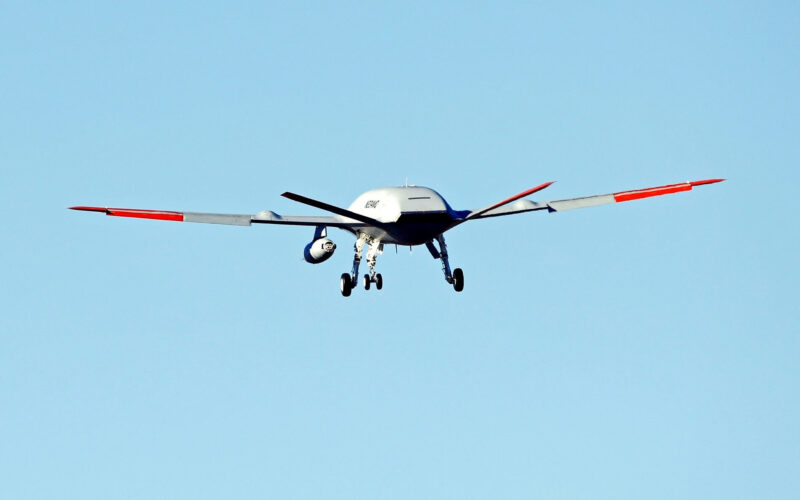Boeing, in collaboration with the United States Navy, carried out a test flight of the MQ-25 Stingray T1 test asset sporting an aerial refueling pod on December 9, 2020. The pod, called Cobham ARS (Aerial Refueling Store), is the same used for air-to-air refueling of the Navy’s F/A-18E fighter jets. The flight was conducted by Boeing test pilots operating from a ground control station at MidAmerica St. Louis Airport (BLV) in Mascoutah, Illinois.
The Boeing-owned test asset received its experimental airworthiness certificate from the Federal Aviation Administration in September 2019. For this latest flight, it was carrying the civilian registration N234MQ. The aircraft flew for 2h30 to perform aerodynamic tests and to verify the behavior of the equipment mounted on the wing. “To see T1 fly with the hardware and software that makes MQ-25 an aerial refueler this early in the program is a visible reminder of the capability we’re bringing to the carrier deck,” said Dave Bujold, Boeing’s MQ-25 program director.
Another first for #MQ25! Watch our test asset for the @USNavy unmanned aerial refueler take off for the first time with an aerial refueling pod. The pod contains the hose and basket that will help refuel Navy fighter aircraft. pic.twitter.com/csgBSOJWur
— Boeing Defense (@BoeingDefense) December 9, 2020
The MQ-25 Stingray will be used in the future as an unmanned aerial refueler, capable of making medium-distance flights and aerial refueling of fighters. Its maiden sortie took place on September 20, 2020. The aircraft validated its basic flight functions and operations with the ground control station. The test campaign has accumulated 30 hours of flights so far.
Birthed from the remains of the Unmanned Carrier-Launched Airborne Surveillance and Strike (UCLASS) program, which was canceled due to budget constraints, the Carrier-Based Aerial-Refueling System (CBAR) aims to offer an innovative solution to tanking missions of the U.S. Navy. For now, they are carried by Super Hornets, which are loaded with five fuel tanks. But with 20% to 30% of their flight time dedicated to those missions, the Navy is scared of prematurely burning through the service life of their aircraft.
Under the CBAR contract, the Stingray is required by the U.S. Navy to deliver 7,000 liters of fuel within 500 miles (approximately 920 km) to fighters such as the F/A-18 Super Hornet, the Lockheed Martin F-35C Lightning II, and the E/A-18G Growler electronic warfare aircraft. The unmanned refueler should eventually increase the range of carrier wings, allowing aircraft carriers to remain further away from the coast during an operation, out of reach from potential threats coming from the ground.

